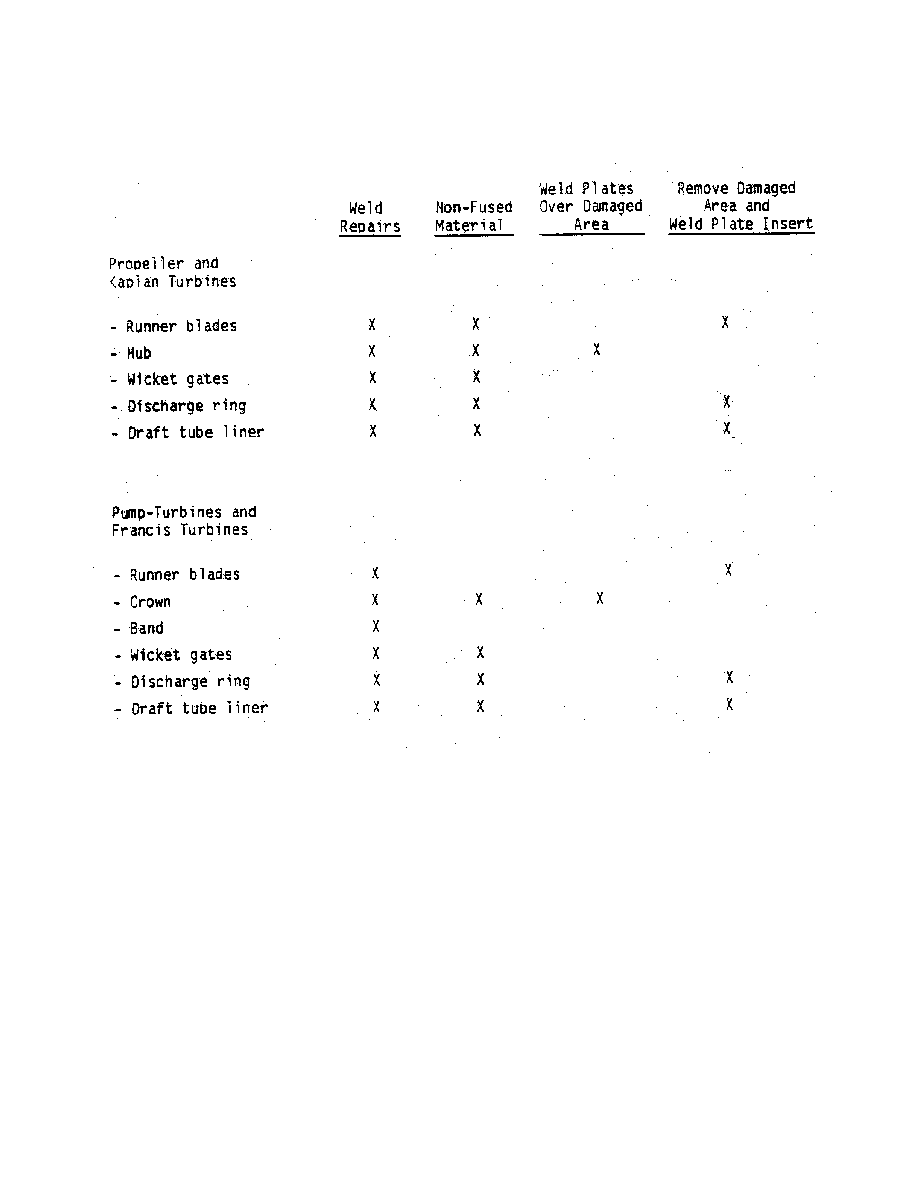

"Operating and maintenance experience, other than cavitation damage, may
dictate a more frequent inspection (e.g., blade cracking, seal wear). Also, a
more frequent inspection is warranted when making runner profile modifications
so as to adequately monitor the effectiveness of the changes.
dictate a more frequent inspection (e.g., blade cracking, seal wear). Also, a
more frequent inspection is warranted when making runner profile modifications
so as to adequately monitor the effectiveness of the changes.
"Cavitation Repairs
"The frequency of turbine cavitation repairs will vary from plant to plant. The time
between repairs will depend upon the rate of metal removal, the plant owner's
philosophy for repairs, and other indirect factors.
between repairs will depend upon the rate of metal removal, the plant owner's
philosophy for repairs, and other indirect factors.
"Approaches for cavitation repair as developed by plant owners are:
Make all repairs each inspection period. Many plant owners believe
that this is good practice from a preventive maintenance point of view.
that this is good practice from a preventive maintenance point of view.
Repair only areas where cavitation damage is I/8 inch (3 mm) or
deeper. Preparation of damaged areas even with only light surface
"frosting" is usually done to a depth of at least 1/8 inch (3 mm).
deeper. Preparation of damaged areas even with only light surface
"frosting" is usually done to a depth of at least 1/8 inch (3 mm).
Repair areas on stainless steel overlay where pitting is 1/8 inch (3 mm)
or deeper. On carbon steel, repair areas even with light damage using
stainless steel weld material.
or deeper. On carbon steel, repair areas even with light damage using
stainless steel weld material.
Allow cavitation to progress to the maximum depth which can be
repaired with two weld passes (about 3/8 inch [10 mm]).
repaired with two weld passes (about 3/8 inch [10 mm]).
Make repairs only when damage becomes so bad that it threatens to
impair the strength of the turbine or when preparation of the damaged
area may result in holes completely through the runner blade.
impair the strength of the turbine or when preparation of the damaged
area may result in holes completely through the runner blade.
"Indirect factors which influence scheduling of repair work include:
Availability of maintenance personnel
System operating conditions such as requirements for peaking or standby
capacity, transmission limitations, and unscheduled outages of other units
capacity, transmission limitations, and unscheduled outages of other units
"It is not possible to give specific recommendations for frequency of cavitation
repairs because each plant or unit should be evaluated on an individual basis.
repairs because each plant or unit should be evaluated on an individual basis.
7